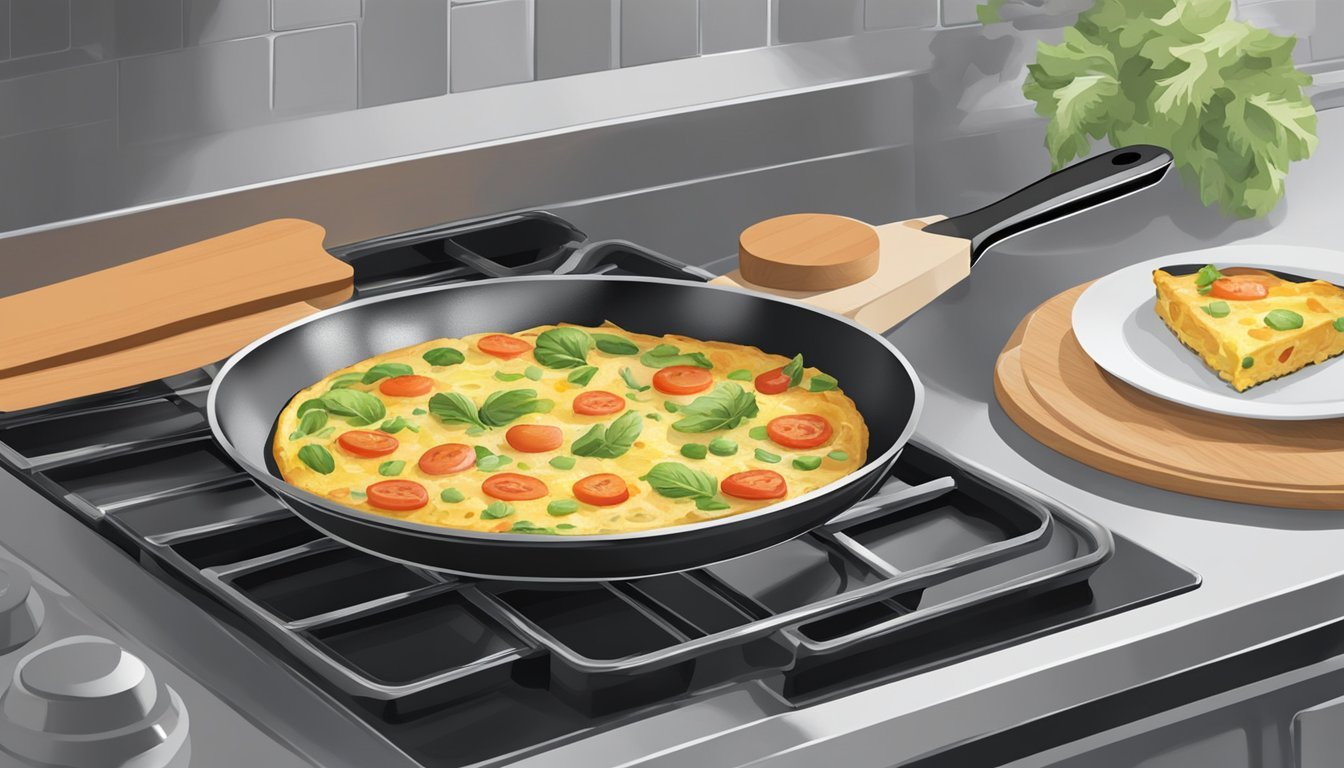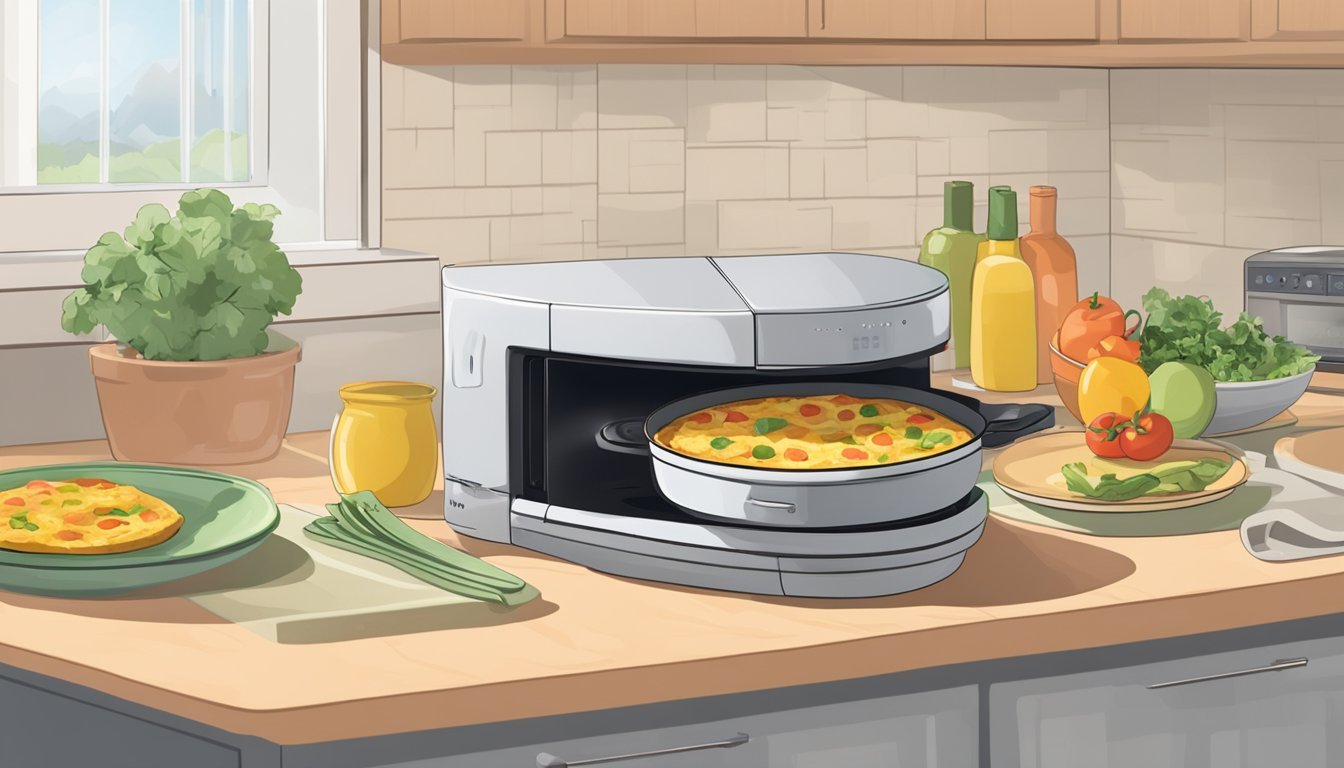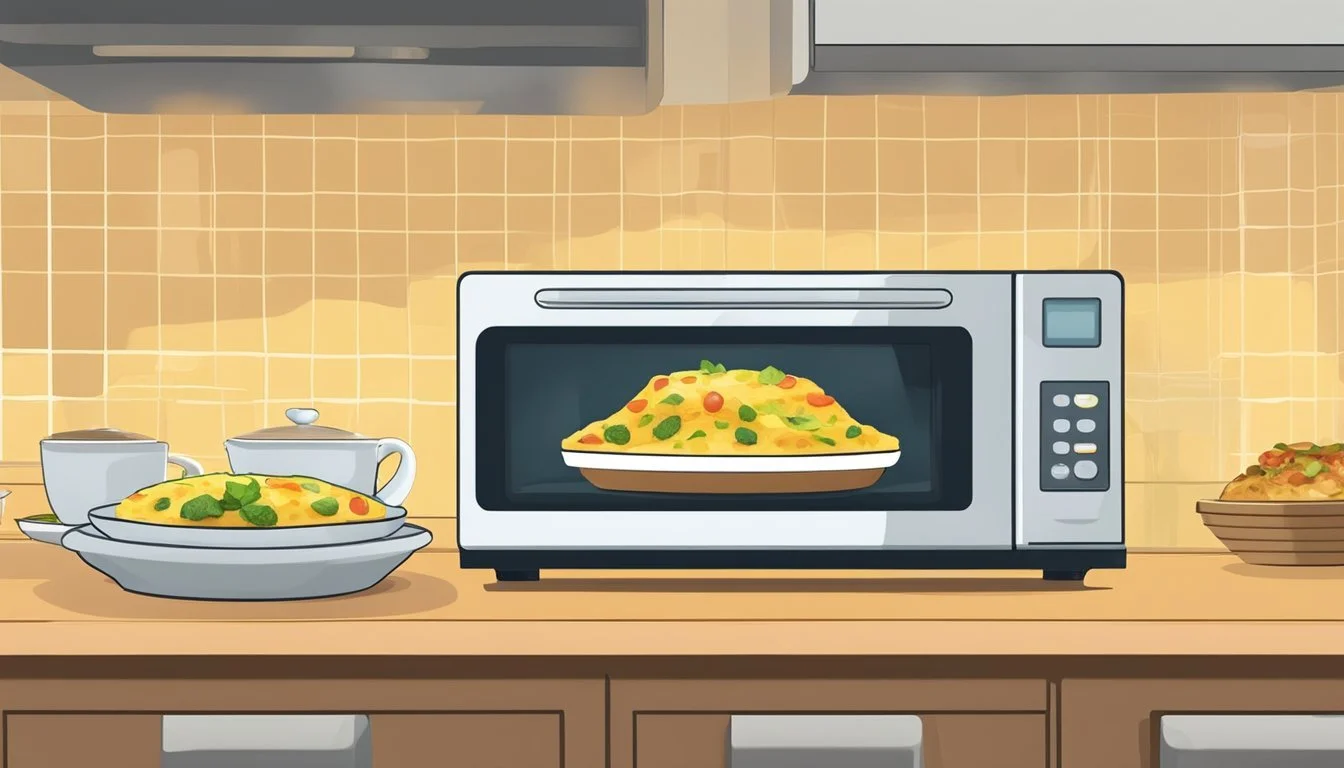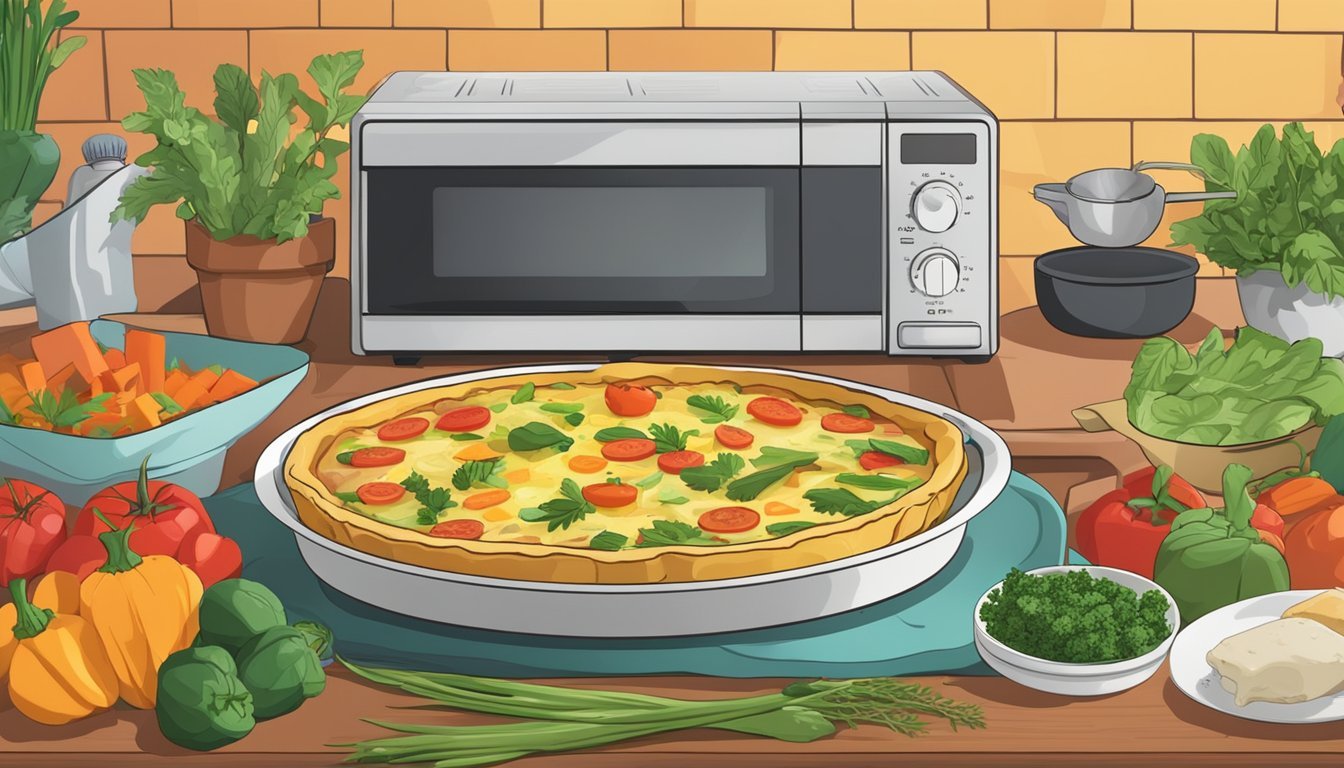How to Reheat Frittata for Perfect Texture and Flavor
Reheating a frittata can be a daunting task if you are unsure of the best methods to keep this Italian dish both flavorful and moist. A frittata, typically made from eggs, vegetables, and sometimes meats or cheeses, is a versatile dish that often leaves you with delightful leftovers. To reheat leftover frittata effectively, it's essential to choose the right method to maintain its taste and texture.
One of the most straightforward options is using a microwave. Place the frittata on a microwave-safe plate, cover it with a damp paper towel if it appears dry, and heat for 1 to 2 minutes on high. Another reliable method involves reheating in an oven. Preheat the oven to 350 degrees Fahrenheit, place the frittata on a lined baking sheet, and heat for 35 to 45 minutes if frozen, or around 10-15 minutes if refrigerated.
For those looking to retain a crispy exterior, the skillet method is ideal. By heating a small amount of oil or butter in a skillet and gently reheating the frittata for a few minutes on each side, you achieve a result that closely mirrors its original appeal. Whether you choose the microwave, oven, or skillet, each method ensures that your frittata remains delicious and ready to serve.
Understanding Frittatas
Frittatas are a versatile dish that can easily be adapted with various ingredients and flavors. They are often compared to omelets and quiches but have distinct differences in preparation and texture.
Ingredients and Variations
A frittata typically starts with eggs as its base, combined with milk or cream to achieve a creamy texture. Common ingredients include a mix of cheese, vegetables, and meats. Popular cheeses such as mozzarella, cheddar, and Parmesan add rich flavor.
Vegetables like spinach, bell peppers, onions, and tomatoes provide color and nutrition, while meats such as bacon, ham, or sausage offer a hearty component. The Italian influence is often evident in the use of herbs like basil and oregano.
Frittata vs. Omelet and Quiche
While all three dishes incorporate eggs, they differ in technique and structure. An omelet is typically cooked quickly in a pan and folded around fillings, resulting in a soft, folded egg dish.
A quiche has a pastry crust and is baked slowly, usually with a rich custard filling that includes a blend of eggs and cream. Frittatas, on the other hand, are cooked slowly either on the stovetop or in the oven without a crust, allowing for a tender and set interior.
The Versatility of a Frittata
One of the greatest strengths of a frittata is its versatility. It can be served hot or cold, making it an excellent choice for any meal of the day.
They can be made with a variety of fillings, whether you prefer a vegetarian option with mixed vegetables or a more substantial version with meat and cheese. Frittatas also adapt well to different cuisines, with Italian versions often featuring ingredients like sun-dried tomatoes and prosciutto.
The ease of preparation and adaptability to whatever ingredients are on hand make frittatas a go-to dish for many home cooks.
Storing Frittatas
Properly storing frittatas ensures they remain fresh and tasty. Here are the best methods for refrigerating and freezing frittatas to keep them in optimal condition.
Tips for Refrigerating
When refrigerating frittatas, it's essential to use appropriate containers to maintain their quality. Place the frittata in an airtight container to prevent it from absorbing other odors from the fridge. Alternatively, wrap the frittata tightly with plastic wrap or foil before placing it in the refrigerator.
Ensure the frittata has cooled to room temperature before storing it. This helps prevent condensation that can make the frittata soggy. Consume refrigerated frittatas within 3-4 days for the best taste and safety. Keeping a designated spot in the fridge for leftovers can also help in managing and consuming them in a timely manner.
Freezing and Preventing Freezer Burn
Freezing frittatas is a practical way to extend their shelf life. To freeze, first, let the frittata cool completely. Cut it into individual portions for easier reheating later. Wrap each piece tightly with plastic wrap and then a layer of foil to protect against freezer burn.
Place the wrapped pieces in an airtight container or freezer bag, removing as much air as possible. Label the container with the date to keep track of how long it has been stored. Frozen frittatas can be kept for up to 2 months. Use within this period to ensure they retain their best texture and flavor. Proper wrapping and labeling will prevent freezer burn and maximize the quality of the frittata.
Preparing Frittata for Reheating
Before reheating a frittata, it's crucial to handle it properly to preserve its texture and flavor. Key steps include allowing the frittata to reach room temperature and using protective coverings like aluminum foil and parchment paper to prevent it from drying out.
Bringing Frittata to Room Temperature
To achieve the best results, take the frittata out of the refrigerator and let it sit at room temperature for about 20-30 minutes. This reduces the reheating time and ensures even heating. When the frittata is cold, it can take longer to heat, which might lead to overcooking the exterior while the interior remains cold.
Room temperature also helps in maintaining the frittata's moisture content. A cold frittata can become dry when exposed to direct heat. Letting it sit allows it to warm up gradually, preserving its texture and avoiding any rubbery consistency.
Wrapping and Protecting Texture
To maintain the frittata's texture during reheating, it's important to use appropriate coverings. Aluminum foil is excellent for creating a barrier that keeps the frittata moist. Cover the frittata loosely with foil, ensuring there is some space for steam to escape. This prevents the frittata from becoming soggy.
If you prefer a slightly softer texture, placing a damp paper towel over the frittata before heating can help retain more moisture. For oven reheating, use parchment paper to line the baking sheet. This prevents sticking and makes cleanup easier. Wrapping properly not only protects the texture but also enhances the reheating process by evenly distributing the heat.
Reheating Frittata in the Oven
Reheating frittata in the oven is a preferred method for those who want to retain the dish's original texture and crispiness. It ensures even heating and helps maintain the quality of the frittata.
Oven Reheating Steps
To reheat a frittata in the oven, first preheat the oven to 350°F (175°C). This temperature is optimal for warming the frittata evenly without overcooking it.
Place the frittata on a baking sheet lined with parchment paper. This will prevent sticking and make cleanup easier. If the frittata was stored in the refrigerator, there's no need to wait for it to reach room temperature.
Cover the top of the frittata loosely with aluminum foil. This helps keep the heat around the frittata, ensuring it warms all the way through without drying out.
Heat for about 15-20 minutes. If the frittata is particularly thick or was frozen, it may take a bit longer. Check that the frittata is heated throughout before serving.
Maintaining Moisture and Crispiness
To maintain the moisture of the frittata, covering it with aluminum foil is crucial. This traps steam and prevents the frittata from becoming too dry.
For a crispier top, remove the aluminum foil during the last few minutes of reheating. This allows the top to regain some of its original texture without overcooking the inside.
Using a conventional oven rather than a toaster oven or microwave yields the best results in terms of both moisture and texture. The consistent heat of a conventional oven ensures even reheating.
For an extra touch, consider briefly using the broiler. After removing the foil, place the frittata under the broiler for 1-2 minutes. Keep a close eye to prevent burning.
Following these steps will help ensure that your reheated frittata retains its delicious flavor and texture.
Using a Skillet to Reheat
Reheating a frittata using a skillet ensures even heating and helps maintain the dish's texture. This method requires minimal equipment and can be done in a matter of minutes.
Skillet Reheating Technique
When using a skillet to reheat a frittata, it is essential to heat the pan adequately. Start by placing a non-stick skillet on the stovetop over medium heat. Add a small amount of oil or butter to the skillet. Once the oil or butter has melted and the skillet is hot, gently place the frittata in the pan.
Heat the frittata for 2-3 minutes on one side. Then, carefully flip it with a spatula and heat for another 2 minutes, ensuring it is heated through. Avoid overcrowding the skillet, as this can lead to uneven reheating. Instead, reheat multiple slices in batches if necessary.
Achieving a Firmer Texture
For those who prefer a firmer texture, a few adjustments can be made. The key is to use slightly higher heat and ensure an even, crispy finish. Begin by heating the skillet as before, using oil or butter for added flavor.
Place the frittata slices in the skillet and press them gently with a spatula to increase contact with the hot surface. Heat each side for 3-4 minutes, which will create a firmer and slightly crispy texture.
Keep an eye on the frittata to prevent overcooking, and always use a non-stick skillet to avoid sticking. This method not only warms the frittata but also enhances its texture, making it an enjoyable option for reheating.
Microwave Reheating Method
Reheating a frittata in the microwave is a fast and practical option, ensuring your dish retains its flavor and texture. Proper steps help avoid rubberiness and maintain quality.
Speed and Convenience
Using the microwave to reheat a frittata offers unmatched speed and convenience, especially for quick breakfasts or busy schedules. Start by placing the leftover frittata on a microwave-safe plate. If there are extra toppings, arrange them on top before covering with microwave-safe plastic wrap or a microwave-safe lid.
Reheat on high for 1-2 minutes, depending on the quantity and thickness of the frittata. A damp paper towel can be placed over the frittata to retain moisture and prevent it from drying out. This method is ideal for those needing a quick and easy meal without compromising on taste.
Avoiding Rubberiness
One challenge with microwaving frittatas is avoiding a rubbery texture, which can occur if not reheated properly. To minimize this risk, ensure the frittata is covered with a microwave-safe wrap or damp paper towel. This helps create steam, keeping the frittata moist.
Avoid overheating by checking the frittata in increments. Begin with 1 minute, then check the temperature and texture. If it’s not heated through, continue in shorter bursts of 15-30 seconds. This careful approach helps maintain the frittata’s original texture. Remember, less is often more when using the microwave, so short increments are key to achieving the best results.
Reheating with an Air Fryer
Reheating a frittata using an air fryer is a convenient method that ensures a crispy texture. The process can vary slightly depending on whether your frittata is refrigerated or frozen.
Air Fryer Technique
Set the air fryer to 300°F. For refrigerated frittatas, arrange the slices in the air fryer basket in a single layer. Avoid overcrowding to ensure even heating.
If the frittata is frozen, it requires more time, usually around 35-40 minutes. Cover with aluminum foil for a softer texture if desired.
Instructions:
Preheat to 300°F
Place slices in basket
Heat for 5-8 minutes if refrigerated, 35-40 minutes if frozen
Ensuring a Crispy Outcome
For a crispy texture, preheat the air fryer to 350°F. Arrange the frittata pieces with gaps in between to allow air circulation.
Check for doneness halfway through and adjust time if necessary. Use a cooking thermometer to verify the internal temperature reaches 165°F to ensure it's heated through.
Steps for Crispiness:
Preheat to 350°F
Place slices with gaps
Cook for 5-7 minutes
This method adds a delightful crisp without drying out the frittata.
Additional Reheating Tips
Reheating a frittata involves not just retaining the texture but also preserving the flavors and avoiding overcooking. Following these tips will help ensure the best results.
Managing Flavors and Fillings
When reheating a frittata, the integrity of the fillings matters. Spinach, peppers, tomatoes, and mushrooms are common ingredients that can lose their appeal if not handled properly. To manage flavors, use a damp paper towel or a light coating of oil to preserve moisture.
Herbs such as parsley or basil should be added after reheating to maintain their freshness. When reheating, consider adding a fresh sprinkle of cheese to enhance flavor. This approach ensures a vibrant taste profile and prevents fillings from becoming soggy.
Avoiding Overcooking
Overcooking is a common issue when reheating a frittata, leading to a dry or rubbery texture. To avoid this, monitor the reheating process closely. In microwave heating, use short intervals and check frequently.
For an oven method, cover the frittata loosely with foil to trap moisture. Reheat at a moderate temperature around 350°F (175°C) for a controlled and even heat distribution.
Using an air fryer can add crispiness but watch out for high temperatures to prevent overcooking. By following these practices, the texture and moisture of the frittata can be preserved, delivering the best results.
Special Considerations
When reheating a frittata, specific considerations ensure optimal texture and flavor. Different methods, such as reheating a frozen frittata or using a toaster oven, require particular steps to achieve the best results.
Reheating Frozen Frittata
For a frozen frittata, it's essential to thaw it properly for the best texture. Begin by defrosting the frittata in the refrigerator overnight. This gradual thawing helps maintain the frittata’s consistency. If needed, you can defrost it in the microwave on a low setting for about a minute or two, checking frequently.
Once thawed, preheat the oven to 350°F (175°C). Place the frittata on a baking sheet lined with parchment paper. Cover it with aluminum foil to prevent drying out. Bake for approximately 10-15 minutes or until it is heated through. This method ensures that the frittata stays moist and retains its flavor.
Using a Toaster Oven
A toaster oven can be an excellent tool for reheating a frittata due to its compact size and even heating. Preheat the toaster oven to 350°F (175°C). Place the frittata slices directly onto the toaster oven rack or a baking tray, ensuring they are not stacked or overlapping for even heating.
Cover the frittata with aluminum foil to retain moisture. Reheat for around 10-12 minutes, checking halfway to ensure it does not dry out. If the frittata becomes too dry, placing a damp paper towel over it during reheating can help preserve its moisture. This method provides a warm, evenly heated, and flavorful frittata.
Frittata's Role in Meals
Frittata proves to be a versatile dish, serving as an excellent option for both breakfast and brunch. It's also a great way to incorporate leftover vegetables and other ingredients into a new meal.
Frittata for Breakfast and Brunch
Frittata is often enjoyed as a quick breakfast or brunch dish due to its preparation ease and rich protein content. As an Italian egg dish, it’s similar in concept to an omelet but typically cooked slower and larger.
For breakfast, frittata pairs well with sides like toast, fruit, or potatoes. During brunch, it can be the star dish, complemented with fresh salads or a variety of toppings such as cheese, herbs, and meats.
Its ability to be made ahead and easily reheated makes frittata a practical option for busy mornings, ensuring a nutritious meal is always within reach.
Incorporating Leftovers
One of the most appealing aspects of making a frittata is its ability to utilize leftover vegetables and other ingredients. Bits of roasted veggies, meats, and even pasta can be folded into the mixture, reducing food waste.
When including leftovers, it's important to ensure they are reheated and mixed well with the eggs. This versatile nature makes frittata an economical and sustainable dish, constantly changing based on available ingredients.
Whether for breakfast or brunch, incorporating leftovers into a frittata transforms these components into a cohesive, flavorful dish. This flexibility also allows for endless variations, keeping meals both interesting and nutritious.









